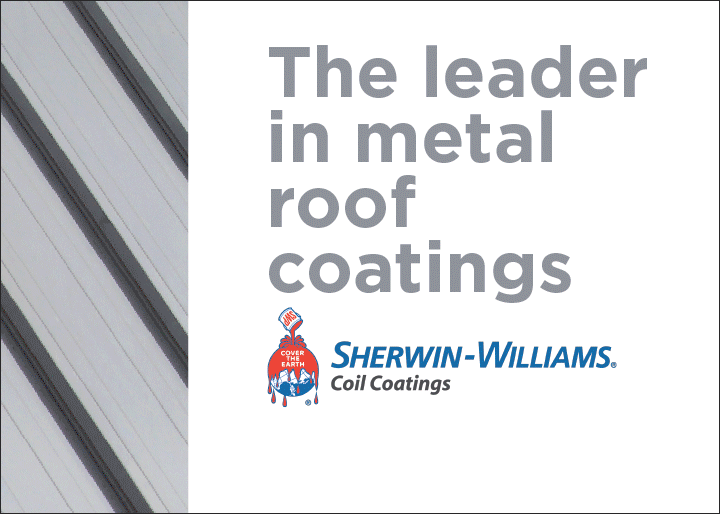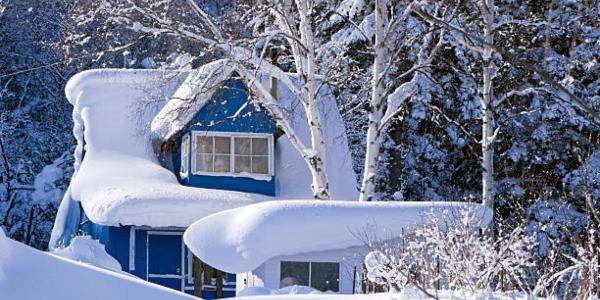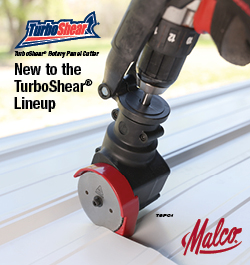UP TO THE MINUTE
How hail size impacts roof damage

By Trevor Underwood, DECRA Metal Roofing.
Hailstorms can be unpredictable. Find out which hail sizes can leave your roof vulnerable to damage.
For homeowners and building owners in hail-prone regions, taking proper precautions before and after storms is crucial to maintaining the integrity and health of their roofs. Hail damage can vary based on a variety of factors and shouldn’t be taken lightly as no two storms will be alike or produce the same amount of damage. Being prepared for storms and investing in the right roofing materials can reduce potential damage and protect your property.
Hailstones as small as one inch in diameter can damage a roof, and even smaller hail can be destructive when accompanied by strong winds or when striking roofing materials that were not engineered to withstand impact.
As the size of hail increases, so does the likelihood for significant damage–hailstones 1.5 inches or larger can cause serious damage.
Given the many factors that affect both hail size and its potential to damage a roof, it’s important for homeowners to be informed. DECRA Metal Roofing touches on key considerations below.
What determines the size of a hailstone?
Hail forms in thunderstorms, with its size determined by factors such as atmospheric conditions, wind updraft strength and the availability of supercooled water droplets.
Atmospheric conditions
The atmosphere consists of several layers and temperature varies at different altitudes. When the temperature is below freezing in the uppermost part of the atmosphere, it creates the perfect storm (pun intended) for hail formation. The greater the temperature difference between the ground and the upper atmosphere, the more likely it is for hailstones to grow larger.
Updraft strength
An updraft is a powerful upward-moving wind current that develops within a thunderstorm. The stronger the updraft, the more time hailstones have to grow as they’re suspended in the storm cloud. The updrafts lift the hailstones through the freezing layer, allowing them to accumulate more ice as they collide with supercooled water droplets. The stronger the updraft, the larger the hailstone.
Availability of supercooled water droplets
Hailstones grow by colliding with supercooled water droplets. These droplets remain in a liquid state even at temperatures below freezing. When they come into contact with hailstones, they freeze onto the hailstones, adding to their mass. The more supercooled water droplets present in the storm, the larger the hailstones can grow.
Spiked hail, also known as "hail spikes" or "spiky hail," is a rare phenomenon that occurs when two or more hailstones collide and freeze together during their formation process within a thunderstorm. The collision can cause the hailstones to partially melt, and then refreeze, creating a spiky or irregular appearance.

An even rarer phenomenon occurs when large ice chunks called megacryometeors fall from the sky, weighing up to several hundred pounds. While they resemble hailstones, they form under different atmospheric conditions and can fall even on clear days.

How storm duration impacts hail size
The size of a hailstone is largely dependent on how long it spends in a storm cloud. The longer they remain suspended in the updraft, the more opportunities they have to collide with supercooled water droplets and accumulate ice, resulting in larger hailstones.
In some cases, hailstorm duration can be extended due to multiple storm cells merging, causing hailstones to continue falling over a more extended period of time.
How the size, speed and angle of hail affect the roof
The size of hailstones affects their terminal velocity, which influences the force with which they strike a roof and cause damage.
Larger hailstones have a higher terminal velocity, which increases their impact force and potential to cause damage. Wind speed and direction can also affect the angle and force of hailstone impact, with steeper angles and stronger winds potentially causing more damage.
High winds can cause hailstones to travel at a more oblique angle relative to the ground, which can increase the horizontal component of their velocity. This horizontal velocity can contribute to the overall impact force on a roof, potentially resulting in more damage.
The angle of the roof can impact the potential for damage, as well. Hailstones can cause more damage to low-slope roofs than to high-slope roofs because damage occurs at a 90-degree angle impact. This is one of many reasons that hail-resistant roofing materials are critical for homeowners in hail-prone regions.
The importance of a hail-resistant roofing material
Different roofing materials have varying levels of resistance to hail damage. The best roof for hail will have a UL2218 Class 4 Impact Rating. This is the highest possible rating for a roof’s ability to withstand hail penetration.
For example, metal roofing is more resilient to hail damage than flimsy asphalt shingles or fragile clay tile roofing. Some metal roofs even come with a lifetime limited warranty for hail penetration up to 2.5” in diameter.
Traditional roofing materials, such as asphalt shingles and clay tile, aren’t engineered to withstand hail impact. Both are susceptible to hail damage, especially as they age.
As traditional roofing materials age, particularly asphalt shingles, they become more brittle and are more likely to crack or break upon impact with hailstones. This can lead to more severe damage to the roof, leaks and structural damage.
Additionally, hail damage to a roof may not always be immediately evident with asphalt shingles or clay tile. Small cracks or damage to asphalt shingles caused by hail may not be visible to the naked eye and may not cause leaks or other problems until much later.
The durable, impact-resistant strength of DECRA Metal Roofing is one of the best ways to protect your roof from hail damage. Engineered to withstand hail, all DECRA Metal Roofing products are made with high-grade, zinc-aluminum alloyed steel and warrantied for hailstone penetration up to 2.5” in diameter.
DECRA metal roofs are manufactured at our state-of-the-art facility in California, and rigorously tested above and beyond the requirements to ensure the quality that DECRA is known for is present in each and every stone-coated metal roofing panel we produce.
Original article source and images: DECRA Metal Roofing
Learn more about DECRA Metal Roofing in their Coffee Shop Directory or visit www.DECRA.com.




















Comments
Leave a Reply
Have an account? Login to leave a comment!
Sign In